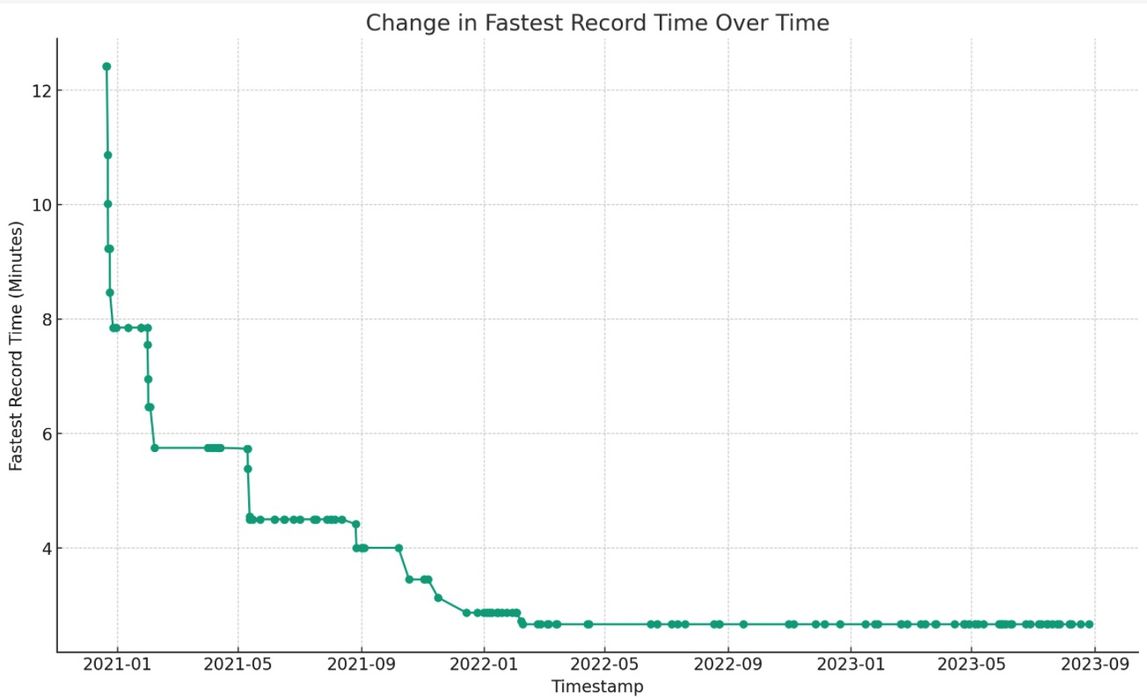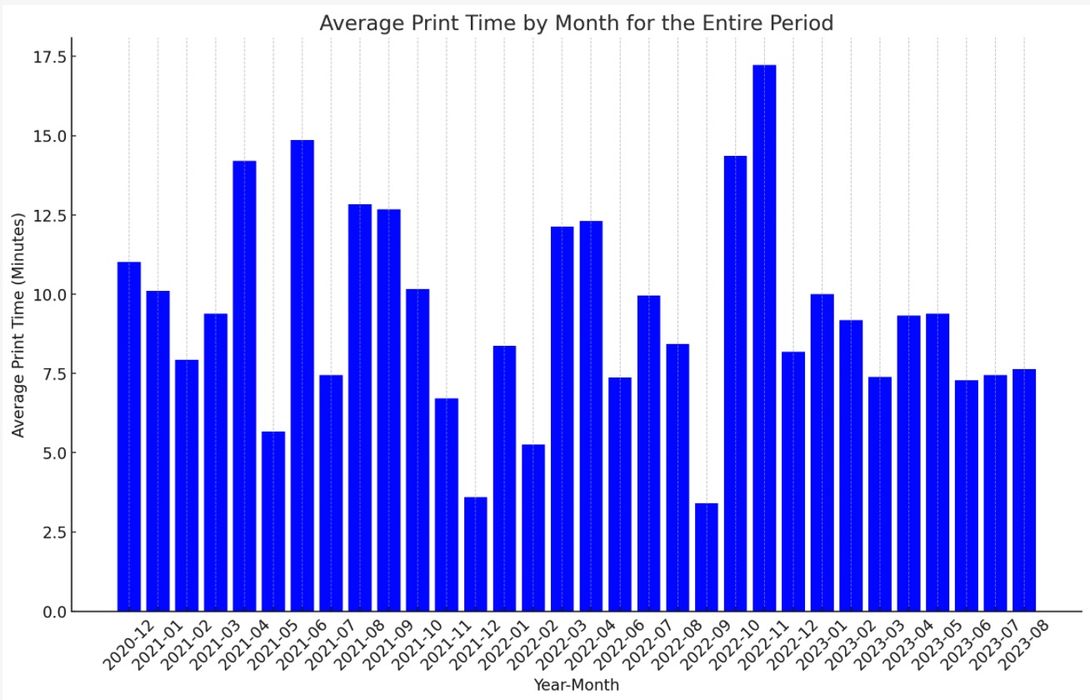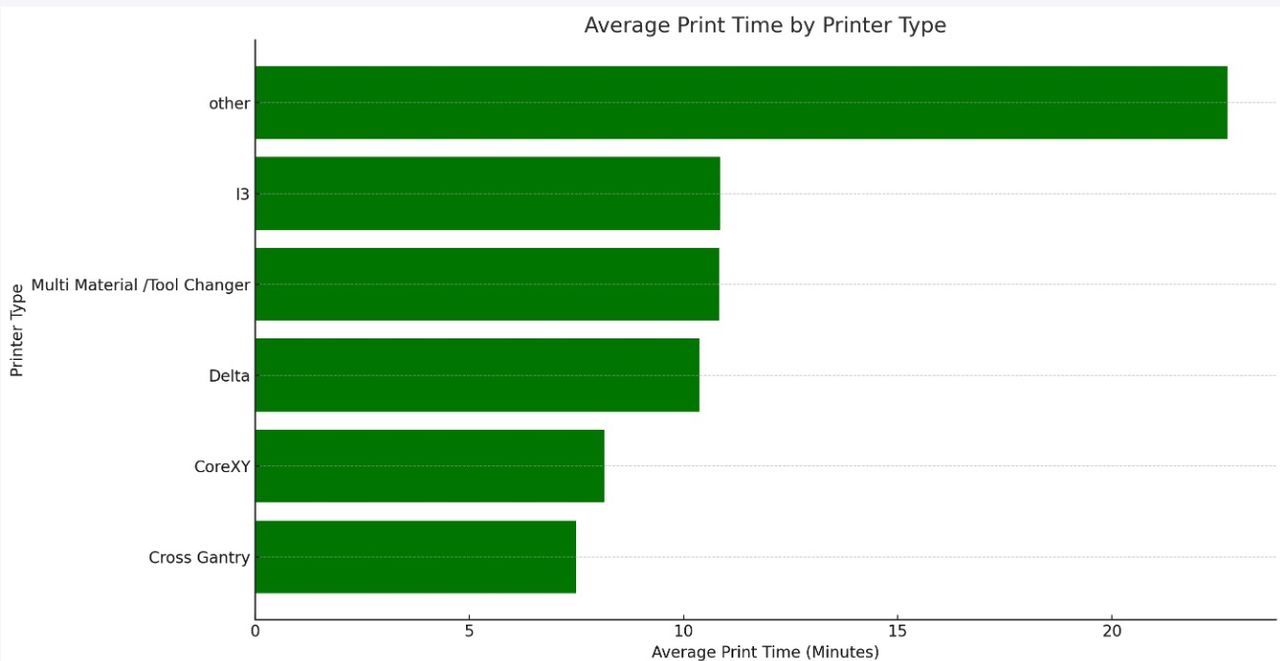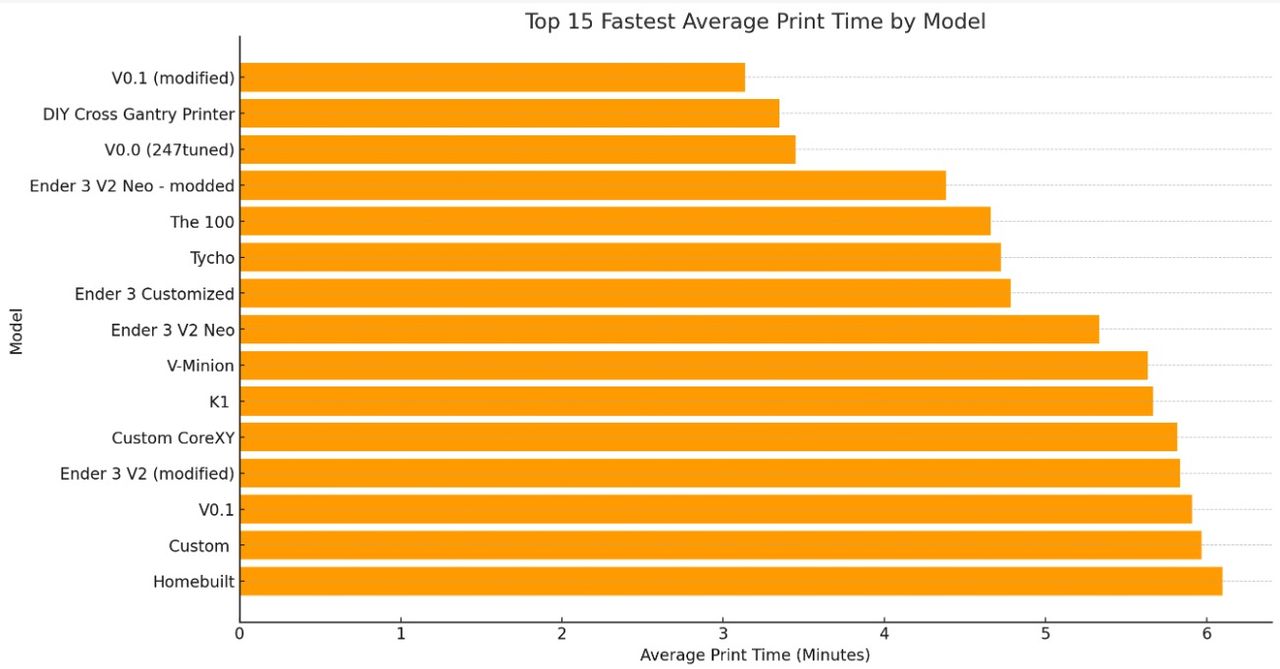
What’s the latest on the #SpeedBoatRace challenge? We found out.
The #SpeedBoatRace Challenge is an unofficial group contest taking place over the past few years. The concept is to 3D print a reasonably competent #3DBenchy model in the least time possible.
The #3DBenchy is a standard benchmark object, first developed back in 2015 by Creative Tools. The object, termed a “jolly 3D printing torture test”, has become a constant object for testing in the 3D print community. Almost certainly it is the most frequently printed object.
The object was designed to offer a variety of geometric challenges in a fun package, and the designers succeeded. On typical 3D printers of today it will take over an hour, perhaps even 90 minutes, to print a nice #3DBenchy.
But can this be done faster? The answer is a resounding, “Yes!”
3D print enthusiasts have been modding their equipment for many years in attempts to squeeze more speed from their machines. Inevitably, this practice evolved into an informal contest called the #SpeedBoatRace Challenge.
There are only a few rules to participate:
- The #3DBenchy must be printed in its original size
- Maximum layer height is 0.25mm (a bit more than the usual 0.2mm)
- There must be two walls/perimeters
- There must be three top and bottom layers
- Maximum extrusion width of 0.5mm
- Infill must be 10%
- Material must be a standard type, not a specialty filament
If you wish to enter the contest on a more official basis, you must submit a real time video of the print showing a clock with the elapsed time for verification.
The semi-official results are collected in a shared Google spreadsheet for all to view.
In the sheet you’ll see many examples of seemingly unbelievable print times of under ten minutes. This seems absurd given that a #3DBenchy takes around 75 minutes on a stock desktop device with default settings.
I decided to do some analysis on this sheet to see how things have progressed, particularly with the recent introduction of many new high speed 3D printers. These machines should approach the speeds of the highly modified equipment previously entered in the challenge.
After cleaning up the data (many entries had inconsistent form), I was able to perform some analysis.
First, I wanted to see how the fastest print record has changed over time. At top is that chart.
As you can see, it hasn’t changed at all in over a year. In early 2022 someone was able to coax a Voron Design V0.1 to produce the benchmark in only two minutes and forty seconds. That record apparently still stands, nearing two years later.
Ok, but have the general results been improving over time? Let’s look at the average print time per month:

This doesn’t seem to be changing very much over time. I would have thought that we’d see a general decrease in print times, but apparently not. This is likely due to the fact that different models are being submitted, with some having great speed, and others not.
My suspicion is that a year from now we will see this begin to decrease as the high speed machines take hold, particularly when they are modified to go even faster.
What about printer type? Which style of 3D printer shows the fastest results?

Here we see that the “cross gantry” style showed the fastest results. Close behind is the increasingly popular CoreXY design, which is now showing up in more inexpensive devices. The i3 style, while slower, apparently can be tuned to produce high speed results that aren’t much different.
Which printer models tended to produce the fastest results?

The champion here is Voron Design’s V0.1, which produced an average print time of just over three minutes for the #3DBenchy prints.
Is there a difference in manufacturer? This really isn’t a fair question because manufacturers produce different models with different characteristics, and also some models by chance haven’t been submitted to the race. But I looked anyway, and found that Voron Designs was clearly at the top, with home built machines following closely.
Interestingly, Anycubic showed up near the top, quite different from many of the more well-known brands. Bambu Lab, the company that triggered the high speed war, was quite far down the list, as was Creality.
What conclusions can we draw from this analysis?
- Voron Designs products seem to be the most popular ultra-high speed FFF desktop 3D printer
- The speed challenge seems to be over, at least until someone breaks a long-standing record or a new technology appears
- Recent high speed machines haven’t yet appeared en masse in the challenge
Finally, I see this analysis as showing how the general print speed limit for FFF 3D printing has been reached by current technology. To really break records, we’re going to have to use a different technology.

Albert at 247 Printing achieved 2:25 a few months ago, on a highly modified Voron V0. I’m not sure why this wasn’t added to the rankings spreadsheet. The video is here: https://youtu.be/IRUQBTPgon4?si=-Offhnieu3tmSTW5
It’s not particularly surprising that speeds have not been increasing very much recently. Like any engineering challenge, it’s climbing an s-curve where improvements become progressively harder and yield smaller benefits. It’s also true that most people have moved on to other things, like backing off on speed a little and printing fast with high quality.
From that perspective, the Speed Boat Race Challenge has done its job. It’s been instrumental in driving up printing speeds. The recent flood of higher-speed consumer printers (Bambu’s printers, and all the new CoreXY printers from Creality, Qidi, Kingroon, etc.) is a direct result of the innovations that the race helped drive: faster motion systems; higher flow; and improved part cooling. Klipper (with input shaping) and Voron printers were the other major contributors, but it’s worth remembering that Maks never intended Voron to be about high-speed printing. It was just that the high-quality CoreXY motion system provided an ideal platform for others to drive up speeds, in part spurred on by the Speed Boat Race Challenge.
One interesting side note is that Simon Vez printed a TPU Benchy in under 5 mins (far beyond my own modest sub-15 min TPU Benchy). A little over two years ago that would have been the fastest Benchy, period! People were still printing TPU at speeds like 10mm/s a few years ago.